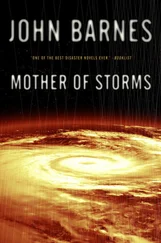“We do,” Arnie said. He was hunched over the tube radio, 1950s vintage and military, but some souvenir company had rebuilt it into an oak box stamped with stars and bronze flags. “They’ve cleared a runway and they can get us clean fuel within a day from our friends in St. Louis.” He fiddled for a moment, and said, “I’m getting… shit.” He spoke into the microphone. “Yankee One, this is the DC-3 you are hailing. If necessary we will comply with your order to land. Are you aware of who is aboard here and why?” Covering the mic with his hand, Arnie said, “It’s an F-35, off one of the carriers. He’s gotta be working at the outer limits of his range, but he’s definitely got us; if he fires, we’re dead.”
“Let me see what I can do.” General McIntyre came forward and took the headset. “This is General Norman McIntyre, temporary commander of the armed forces, appointed by President Graham Weisbrod. If you are acting on orders originating with the NCCC, please be advised that he has been removed from his position as of this morning.”
He listened intently for a moment, then interrupted. “Patch me through to your CO if you can. Better yet, if his CO is Shorty Phat—that would be General Phat to you, Lieutenant—put me through to him. Just put me as far up the chain of command as you can—you’ve caught us, you did your duty, we’ll play ball, but we need to talk to your higher-ups.” A bare three seconds later he asked, “Have you communicated my request to your—”
THE SAME TIME. 95 MILES ABOVE PITTSBURGH. PENNSYLVANIA. 9:24 A.M. EST. WEDNESDAY. DECEMBER 18.
The lumpy bundle of fused rock was roughly cylindrical, about five feet in diameter and ten feet long. It had been falling from the moon toward the bright radio source for three days now, correcting as it went with little jets of steam.
The air so high above the ground is thin, almost a vacuum, but the rock was moving at 25,000 miles per hour, seven miles per second. High spots on its surface were beginning to glow cherry red, and a streak of heated, glowing air was forming behind it, more than enough to activate its temperature and pressure sensors. The timer began its countdown.
One second later, the surface went from glowing red to glowing white, and the layer of water inside began to boil; the rock was 88 miles high.
Two seconds. If the rock had had an eye or camera to see, most of one side of the Earth would still spread out before it. An envelope of white-hot air enclosed it; at night it would have been brighter than a full moon. 83 miles high.
Three seconds . Observers on the Plains and in the Rockies, looking from the west toward the east, saw it as a white streak in the sky. The ice inside liquefied. 79 miles high.
Four seconds . The internal temperature and pressure sensors signaled charges in the pins holding the hollow rock together; the pins ruptured, and the back of the rock blew upward on a plume of steam, to fall wherever it happened to. The rock, shaped like an inverted drinking glass, righted itself with its broad curved bottom pointed down and its Shriner’s-hat top surrounded and held in place by the slipstream.
The device, about as big as a large armchair, had been made on the moon, by the painstaking efforts of many thousands of robots, themselves also made on the moon. Its job was to reach this point, 75 miles above the Earth, directly over the loudest radio source the scanner on the moon had detected—KP-1. It squatted there on its rock perch like a trapdoor spider waiting for prey.
Three more seconds elapsed. At 65 miles above the Earth’s surface, the device—an entirely helium-3 fusion device—detonated. Its explosive power, about one megaton, so far from anything, caused an irrelevant stirring and heating of empty air.
What mattered was not the blast. From about thirty to about sixty miles up, varying by latitude and season, the Earth’s atmosphere is electrically charged—it is called the ionosphere because a charged atom is an ion. Normally little electric current flows there, despite the gigantic potentials. But if something creates enough free electrons in that part of the atmosphere to carry current, mighty arcs—effectively lightning strokes many miles across and thousands of miles long—abruptly appear in the ionosphere, and those gigantic currents cause the EMP below.
The helium-3 pure fusion warhead was the best EMP bomb ever devised. First the soft gamma, a sizable part of its energy release, irradiated the ionosphere within a thousand-mile radius, knocking electrons off the unimaginably many, many atoms in a thousand miles of even very thin air. Less than a microsecond behind, the relativistic protons released by the explosion, with their own charge and enormous velocity, raced through, ripping electrons from the atoms as they passed, hitting nuclei so hard that they left their electrons behind like the dishes on a swiftly snatched tablecloth, and in general breaking everything in their path; one proton, at such high speeds, had to collide violently with more than 30,000 atoms to lose its force.
In a microsecond, a disk of the ionosphere, two thousand miles across and more than thirty miles thick, became as conductive as the inside of a fluorescent tube. Vast currents, with far more energy than the bomb that had freed them, surged back and forth in the atmosphere.
And as everyone learns in high-school physics, a changing electric field induces a changing magnetic field, and vice versa; that is how radio propagates in a vacuum, electric field change inducing magnetic field change that induces another electric field change and so forth, world without end, until there is an antenna somewhere to drain off the moving energy.
The great current surge high overhead induced an extraordinarily strong and rapidly changing magnetic field at the earth’s surface, which induced a current in every conductor. The effect was strongest around Pittsburgh. Still-standing power lines and barbed-wire fences flashed into vapor; highway guardrails and aluminum rain gutters electrocuted birds sitting on them; coathangers in abandoned closets crackled and sparked violently, causing fires that no one came to extinguish. Currents formed in the wiring of battery lanterns, leaped the OFF switch, burned out the filament of the bulb, and exploded the batteries; the electric generators at Westinghouse, rotating at terrifying speed, abruptly melted and flung themselves as molten metal around their housings.
And at KP-1, a mighty current roared down the just-rebuilt antenna, destroying all the station’s equipment and killing a dozen scientists and engineers instantly; no one heard this over the radio, for anyone listening on a crystal set close by was electrocuted, and those farther away were suddenly, desperately trying to put out the flames.
The surge weakened with distance, but still, at St. Louis, the Gateway Arch rattled and sparked with artificial thunder; in New York Harbor, the skeleton of Miss Liberty sizzled with blue glows; everywhere, instantly, far too much electricity.
Dying off with distance, the surging, whirling, swift-changing electromagnetic fields were still strong enough to create shocks and sparks around every conductor they crossed in Kansas City, Winnipeg, Halifax, and Raleigh.
THE SAME TIME. OVER SOUTHERN ILLINOIS A FEW MILES FROM PALE BLUFF. 8:22 A.M. CST. WEDNESDAY. DECEMBER 18.
Inside the oak cabinet something went off like a flashbulb; a moment later, Heather realized that the plane had stopped shaking. Larsen slapped at the panel of dials and tried throwing switches.
“Come in, Yankee One,” McIntyre was saying.
Arnie had already leaned across him, turned the casing around, and was prying off the back. “No good, sir,” Arnie said. “All these tubes are burned black and that smoke smell is roasted insulation.”
Читать дальше












